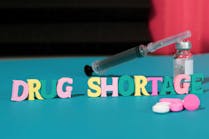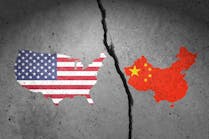Materials are a hospital’s second largest expense, after payroll. Although a great deal of attention is paid to what hospitals pay for supplies, very little attention is paid to how they stock and consume those materials. And while this approach can produce short-term savings, in times of extreme demand, those savings can be quickly depleted due to costly stockouts.
Hospital supply chain staff and clinicians were taxed beyond belief in 2020, as the demands of COVID-19 wracked our country’s healthcare supply chain from top to bottom. Now it’s time to reimagine the healthcare supply chain to avoid future inventory stockouts and free up cash that can be used to hire nurses and physicians.
Supply chain is more than purchasing and moving boxes. In 2014, Bodenheimer and Sinsky published a theory called the Quadruple Aim when discussing the value of supply chain to a hospital. In that report, they summarized four areas where supply chain adds value to the hospital.
Enhancing the patient experience – Avoiding stockouts can shorten the patient’s stay and comfort them while admitted.
Improving outcomes – Stockouts can cause clinicians to compromise on what is used, thereby impacting patient outcomes.
Improving staff work life – Avoiding stockouts can ensure staff safety while at work.
Reducing costs – Keeping inventories in check and reducing the costs of handling inventory leaves more money to care for patients.So, what does it take to achieve this level of hospital supply chain transparency and collaboration? Here are seven simple steps that can be employed by individual hospitals or across an entire health system.
1. Assessment: Hospitals should start by looking for opportunities to reduce costs and reduce unnecessary care variation. Engage with clinicians to ensure that supply chain is strategically aligned with clinical operations. By examining existing supply chain data, hospitals can identify opportunities to reduce cost while improving patient care.
2. Data capture: After establishing a baseline, hospitals can identify new methods for capturing data. Look closely at existing technology to determine how well it fits into existing workflows. Ensuring systems do not disrupt clinicians as they work will improve compliance, allowing hospitals to maximize data capture, which allows accurate tracking and forecasting of inventory.
3. Basic visualization: Once hospitals start capturing data, some basic data visualization makes it possible to answer some of the questions that are key to effective inventory management. Namely: What materials do I have on hand? Where are they located? Who’s using them? How fast are we going through them? When will we run out?
4. Forecasting and adjusting: Answering those questions allows hospitals to create a clearer picture of stock levels and item velocity. That, in turn, leads to more accurate forecasting of demand for each inventory item. Adjusting stocking levels to reflect that demand will allow hospitals to confidently keep less inventory on the shelf without worrying about stocking out.
5. Optimize procedural areas: The most expensive hospital inventory is used in procedure rooms. Hospitals must understand workflows in those areas, as well as how data is captured and how it flows into electronic medical records (EMRs) and enterprise resource planning (ERP) systems. This allows facilities to minimize waste by aligning preference cards with actual use, improving receivables by reducing billing errors and achieving buy-in from clinicians by reducing documentation time.
6. Visualize data across the health system: When hospitals have a complete picture of their available inventory across their entire health system, they can avoid stockouts through proper demand planning and easily transfer supplies between facilities as demand shifts.
7. Data sharing and collaboration: To avoid a repeat of the COVID-19 healthcare supply chain collapse, hospitals must use data to enable collaboration among manufacturers, distributors, GPOs, government agencies and other hospitals. Creating a collaborative, transparent healthcare supply chain ecosystem will benefit everyone — most importantly, patients and clinicians. Before last year, it was easy for hospitals to ignore the cost of their supply chain problems. That is no longer an option. COVID-19 was an extreme situation, but emergencies, such as hurricanes or this year’s frigid weather in Texas, can also create disruptions that will challenge supply chain. Hospitals must be ready for the next wave. All it takes is a few simple steps. To learn more about these seven steps to reimagining hospital supply chain, visit jumptech.com.





